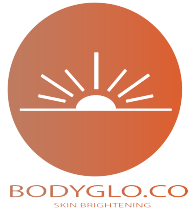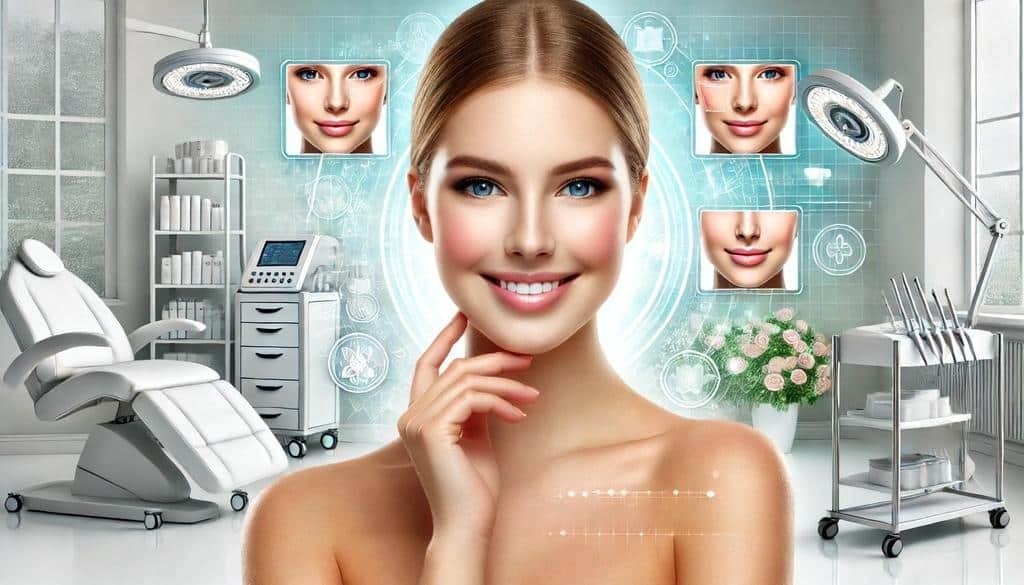People today want skin that looks young and healthy, so they are looking to medical spas for new ways to take care of their skin. One of these treatments that is becoming more popular is the photofacial, which is known for improving skin health and making it look younger. In this piece, we go into detail about photofacial treatment, including its benefits, how it works, safety concerns, and more.
Introduction to Photofacial Treatment
Photofacial treatment, which is also called IPL (Intense Pulsed Light) therapy or fotofacial, is a non-invasive way to make your skin look better generally. Traditional facials clean and moisturize the skin’s surface. Photofacials, on the other hand, go deeper into the skin’s layers to treat problems like sun damage, age spots, rosacea, and uneven coloring.
What is a Photofacial?
Understanding the Procedure
During a photofacial session, pulses of broad-spectrum light are emitted onto the skin, penetrating deep into the dermis without causing harm to the outer layer. This light energy is absorbed by melanin (pigment) and hemoglobin (blood vessels) in the skin, heating them and causing them to break down. As a result, pigmented lesions fade, blood vessels constrict, and collagen production is stimulated, leading to smoother, more youthful-looking skin.
Benefits of Photofacial Treatment
The versatility of photofacial treatment makes it suitable for addressing a wide range of skin concerns, including:
- Sun damage and age spots
- Freckles and uneven pigmentation
- Rosacea and redness
- Fine lines and wrinkles
- Enlarged pores
How Does Photofacial Treatment Work?
Light-based Therapy Explained
The key to the effectiveness of photofacial treatment lies in its use of light-based therapy. Unlike laser treatments that emit a single wavelength of light, photofacials utilize a broad spectrum of light wavelengths, allowing for the simultaneous targeting of multiple skin issues. This makes it a versatile and efficient option for skin rejuvenation.
Targeted Skin Concerns
Whether you’re dealing with sunspots from years of sun exposure or struggling with persistent redness due to rosacea, photofacial treatment can be customized to address your specific skin concerns. By adjusting the intensity and wavelength of the light pulses, dermatologists can precisely target problem areas, delivering optimal results with minimal discomfort.
Who Can Benefit from Photofacial Treatment?
Skin Types and Conditions Suitable for Photofacial
Photofacial treatment is generally safe for individuals with fair to medium skin tones. Darker skin tones may be at a higher risk of experiencing pigment changes or uneven results. It is essential to consult with a qualified dermatologist or skincare professional to determine if photofacial treatment is suitable for your skin type and condition.
Realistic Expectations
While photofacial treatment can yield dramatic improvements in skin tone and texture, it is essential to have realistic expectations regarding the outcome. Multiple sessions may be required to achieve desired results, and maintenance treatments may be necessary to prolong the effects. Additionally, individual responses to treatment may vary, so it’s crucial to discuss your goals and concerns with your provider beforehand.
Before the Treatment
Consultation Process
Before undergoing photofacial treatment, you will typically have a consultation with a skincare specialist to assess your skin condition, discuss your goals, and determine the most suitable treatment plan. During this consultation, be sure to disclose any medical conditions, medications, or skincare products you are currently using, as they may affect your eligibility for treatment.
Preparing Your Skin
In the days leading up to your photofacial appointment, it is essential to avoid prolonged sun exposure and discontinue the use of certain skincare products, such as retinoids and exfoliants, which can increase skin sensitivity. Your provider may also recommend applying a topical numbing cream to minimize discomfort during the procedure.
During the Treatment
Step-by-Step Procedure
The photofacial procedure typically begins with cleansing the skin and applying a cooling gel to enhance comfort and protect the skin’s surface. The handheld device emitting light pulses is then passed over the treatment area, delivering targeted energy to the skin. While some individuals may experience mild discomfort or a sensation of heat during the procedure, most find it tolerable.
Duration and Discomfort Level
The duration of a photofacial session can vary depending on the size of the treatment area and the specific concerns being addressed. However, most sessions last between 30 to 60 minutes, making it a convenient option for individuals with busy schedules. While some redness or swelling may occur immediately following the procedure, these side effects typically subside within a few hours to a few days.
After the Treatment
Post-Care Instructions
Following a photofacial treatment, it is essential to follow your provider’s post-care instructions to optimize results and minimize the risk of complications. This may include avoiding sun exposure, wearing sunscreen daily, and using gentle skincare products that promote healing and hydration. Additionally, it is essential to keep the treated area clean and moisturized to support the skin’s recovery process.
Expected Results and Downtime
While some individuals may notice immediate improvements in their skin’s appearance following a photofacial session, optimal results typically become visible within a few weeks as the skin’s natural healing process takes effect. Minimal downtime is associated with photofacial treatment, allowing individuals to resume their daily activities shortly after the procedure.
Safety and Risks
Potential Side Effects
Like any cosmetic procedure, photofacial treatment carries a risk of potential side effects, though they are generally mild and temporary. These may include:
- Temporary redness or swelling
- Mild discomfort or stinging sensation
- Changes in skin pigmentation (lightening or darkening)
- Rarely, blistering or scarring (more common with improper treatment or sun exposure post-procedure)
Ensuring a Safe Procedure
To minimize the risk of complications and achieve optimal results, it is crucial to undergo photofacial treatment under the supervision of a qualified and experienced skincare professional. Ensure that the medical spa or dermatology clinic you choose adheres to strict safety standards and uses FDA-approved equipment for all procedures.
Cost of Photofacial Treatment
Factors Influencing the Cost
The cost of photofacial treatment can vary depending on several factors, including the size of the treatment area, the number of sessions required, and the geographic location of the medical spa. On average, a single photofacial session may range from $300 to $600, with package deals and discounts often available for multiple sessions.
Worthiness of Investment
While photofacial treatment may require a financial investment upfront, many individuals find it to be a worthwhile expenditure for the long-term improvement of their skin’s appearance and health. When considering the cost, weigh the benefits of improved self-confidence and reduced reliance on makeup against the price of the treatment.
Finding a Reputable Medical Spa
Researching Options
When choosing a medical spa or skincare clinic for photofacial treatment, take the time to research your options thoroughly. Look for facilities with a reputation for excellence, positive client reviews, and qualified professionals who specialize in dermatological procedures. Don’t hesitate to schedule consultations with multiple providers to ensure you feel comfortable and confident in your choice.
Importance of Qualified Professionals
The success and safety of your photofacial treatment depend significantly on the expertise of the skincare professional performing the procedure. Ensure that your provider is licensed, trained, and experienced in administering photofacial treatment and has a comprehensive understanding of skin anatomy and safety protocols.
Alternatives to Photofacial Treatment
Comparing Other Skincare Procedures
While photofacial treatment offers numerous benefits for skin rejuvenation, it may not be the ideal option for everyone. Fortunately, there are several alternative skincare procedures available, each with its unique advantages and considerations. Some alternatives to photofacial treatment include:
- Laser skin resurfacing
- Chemical peels
- Microdermabrasion
- Radiofrequency therapy
Choosing the Right Option for Your Skin Concerns
To determine the most suitable skincare procedure for your needs, consult a qualified dermatologist or skincare professional who can assess your skin condition, discuss your goals, and recommend the most appropriate treatment plan. Remember that combination therapies may also be beneficial for simultaneously addressing multiple concerns.
Real-life Experiences
Testimonials from Individuals who have Undergone Photofacial Treatment
Consider including testimonials or before-and-after photos in your article to provide insight into the real-life experiences of individuals who have undergone photofacial treatment. Hearing firsthand accounts of the treatment process, results, and overall satisfaction can help readers make informed decisions about their skincare journey.
Myths and Misconceptions
Debunking Common Myths Surrounding Photofacial Treatment
As with any skin care process, photofacial treatment is often surrounded by myths and false beliefs that keep people from trying it. By addressing these myths directly, you can help get rid of fears and false information, letting people make smart choices about their skin care.
Future Trends in Photofacial Technology
Advancements and Innovations in the Field
The field of photofacial technology is continually evolving, with researchers and innovators working to enhance treatment efficacy, safety, and patient comfort. From advancements in light-based therapy to the development of targeted skincare products, the future looks promising for individuals seeking effective solutions for their skincare concerns.
What to Expect in the Coming Years
As technology advances and scientific knowledge expands, we can expect to see further refinement and customization of photofacial treatments to address specific skin concerns with precision and efficiency. From personalized treatment plans to shorter recovery times, the future of photofacial technology holds exciting possibilities for skincare enthusiasts worldwide.
Conclusion
Photofacial treatment offers a non-invasive and effective solution for individuals looking to rejuvenate their skin and address various dermatological concerns. From reducing sun damage and age spots to improving overall skin tone and texture, photofacial treatment can help individuals achieve a refreshed and youthful appearance with minimal downtime. By understanding the procedure, considering safety precautions, and consulting with qualified professionals, individuals can embark on their skincare journey with confidence and optimism.
FAQs (Frequently Asked Questions)
- Is photofacial treatment suitable for all skin types?
- Photofacial treatment is generally safe for individuals with fair to medium skin tones. However, darker skin tones may be at a higher risk of experiencing pigment changes or uneven results.
- How many photofacial sessions are typically needed to see results?
- While some individuals may notice improvements after a single session, multiple sessions are usually recommended to achieve optimal results. The exact number of sessions required depends on the individual’s skin condition and treatment goals.
- Are there any side effects or risks associated with photofacial treatment?
- While photofacial treatment is considered safe, there are potential side effects such as temporary redness, swelling, or changes in skin pigmentation. These side effects are usually mild and temporary, resolving on their own within a few days.
- How long do the results of photofacial treatment last?
- The longevity of photofacial results varies from person to person and depends on factors such as skincare maintenance, sun exposure, and lifestyle habits. With proper care, many individuals can enjoy their results for several months to years.
- Can photofacial treatment be combined with other skincare procedures?
- Yes, photofacial treatment can be combined with other skincare procedures for enhanced results. Your skincare provider can recommend a personalized treatment plan that may include a combination of treatments to address your specific concerns.


